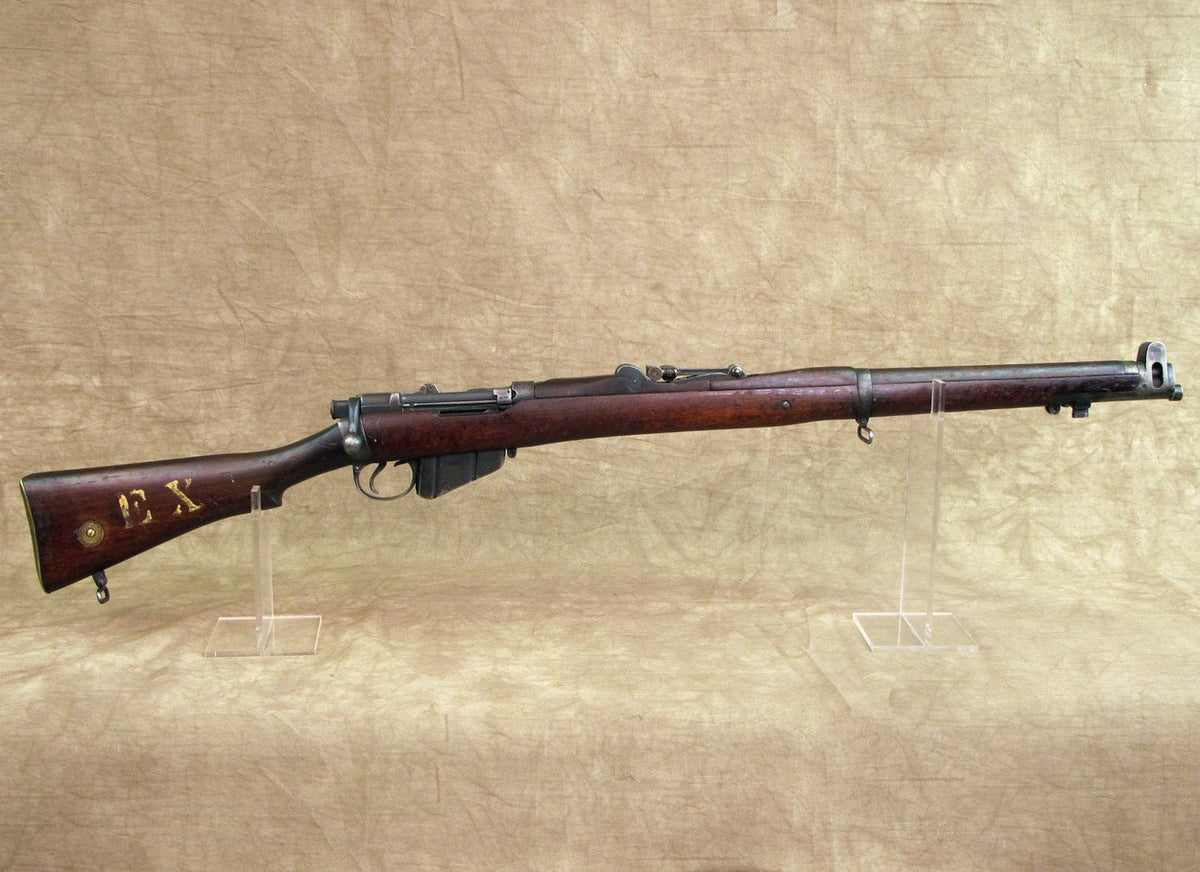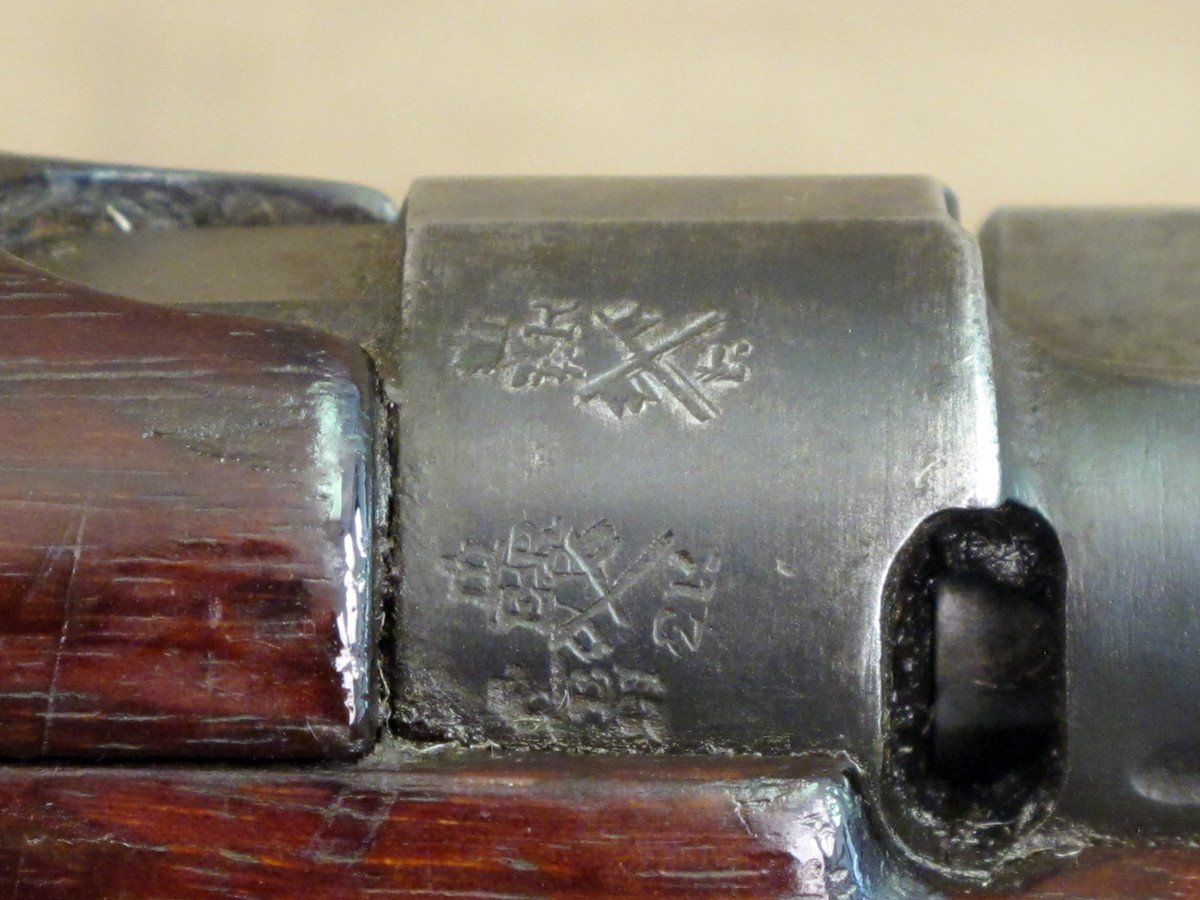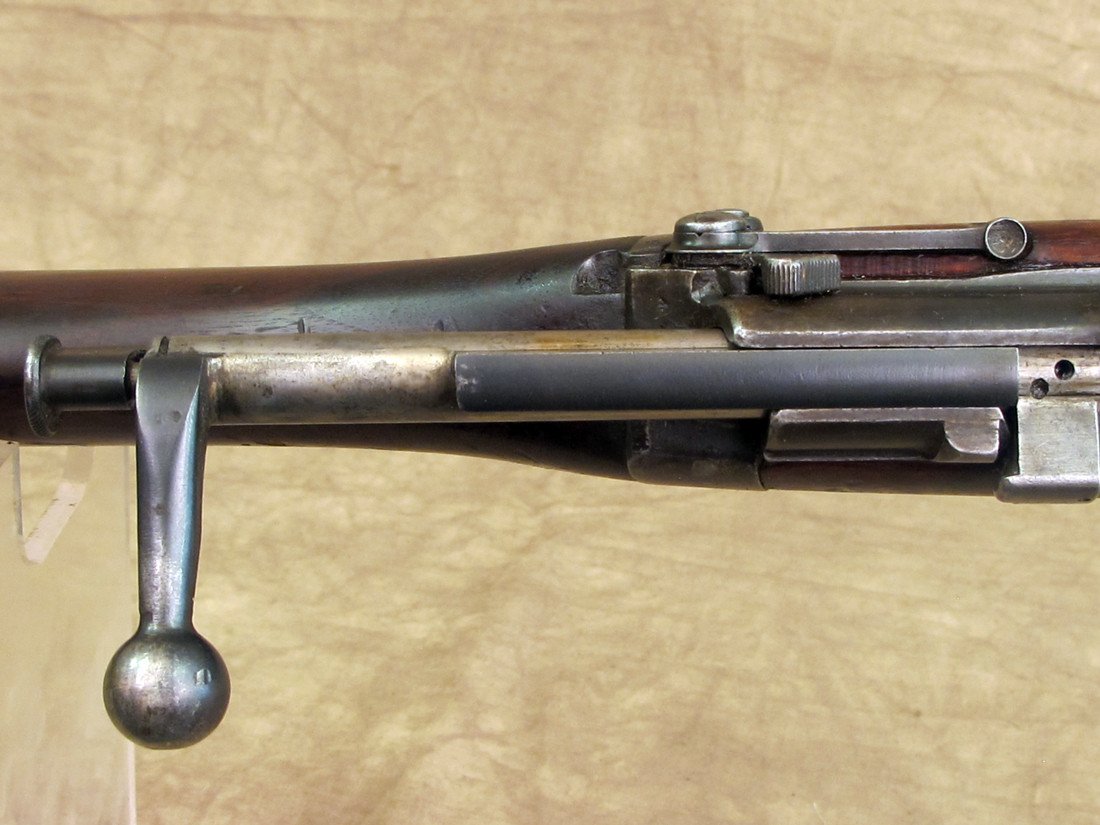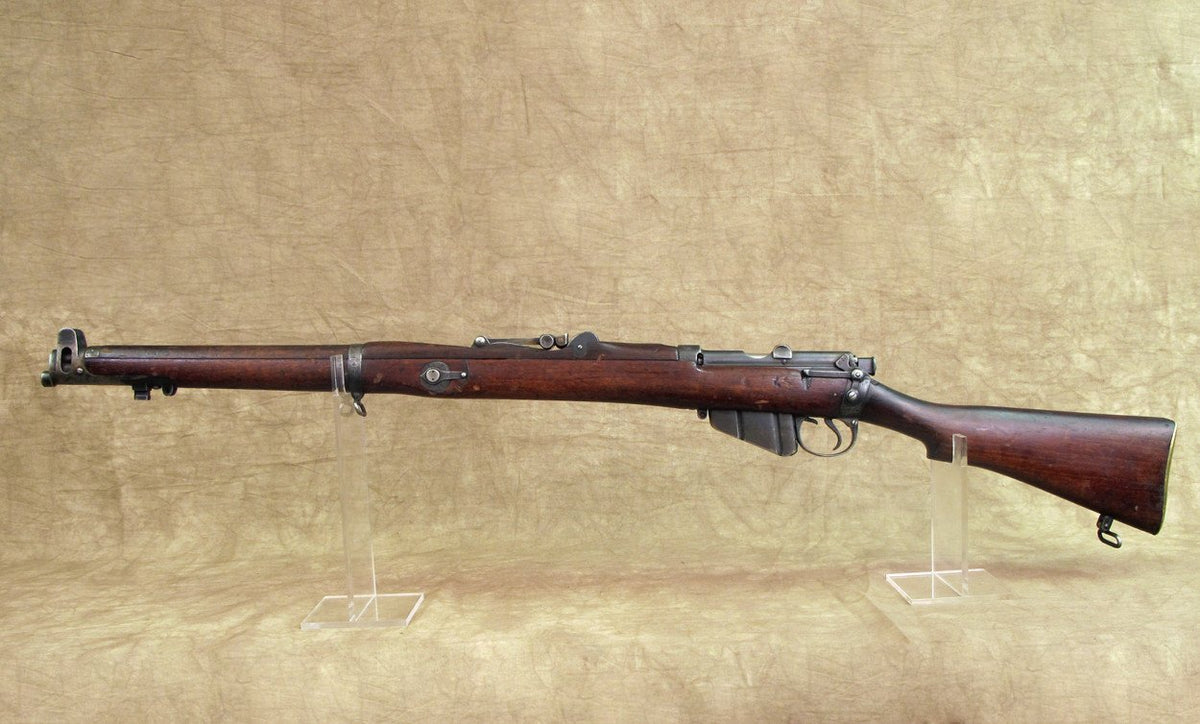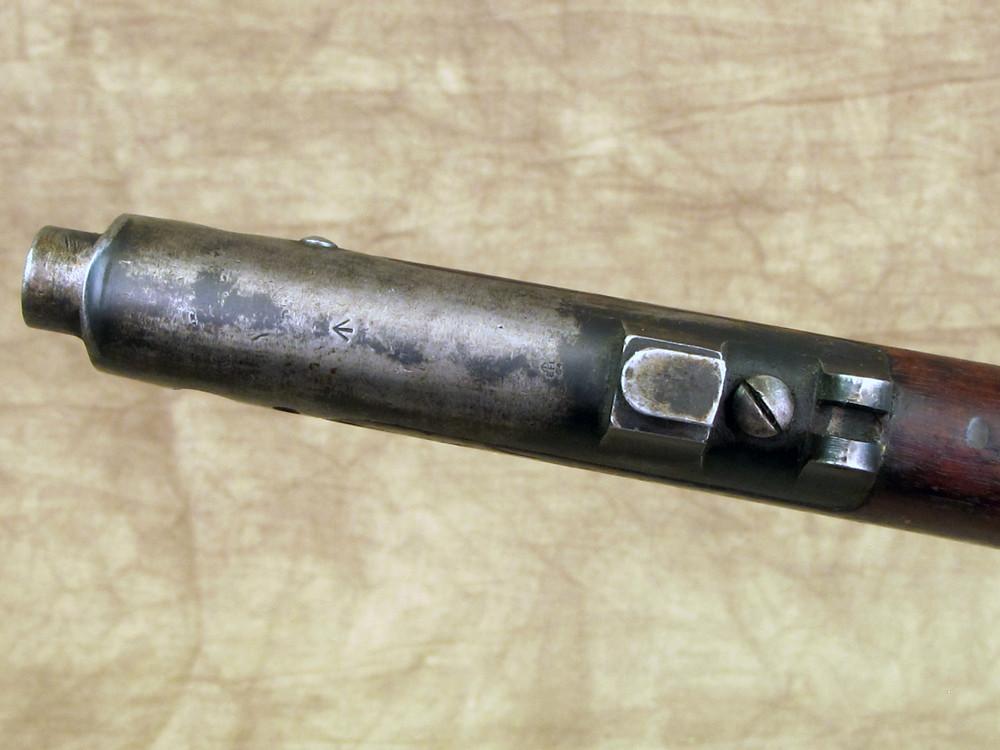Original British 1892 Lee-Metford Mark II .22 caliber Conversion Short Rifle Original Items
$ 2.695,00 $ 673,75
Original Item: One of the great things about collecting British small arms, at least up through the middle of the last century, is that a vast amount of information was stamped into the metal and wood, making it possible to follow the history of an individual piece. The .22 Short Rifle Mk III is a conversion of a conversion, and each step of the conversions is marked on the gun. This example has the following history stamped into the receiver:
First, the reigning monarch at the time was Victoria, and the uppermost item stamped into the butt socket is her cypher, consisting of a distinctive crown over the initials V.R. for Victoria Regina.
Second, ENFIELD/1892/II stamped below the royal cypher indicates that the rifle was originally manufactured at the Royal Small Arms Factory Enfield in 1892 as a Rifle, Magazine, Lee-Metford Mark II. Note that when the Lee-Metford was introduced, no one considered that there might be future modifications of the Lee system with a name different than Lee-Metford. Consequently, there is no Lee-Metford designator on the butt socket, only the mark number, II. As soon as the Rifle, Magazine, Lee-Metford became the Rifle, Magazine, Lee-Enfield, the butt socket designation added LE, and later when it became the short Lee-Enfield, the butt socket displayed SHT LE.
Third, the lower left of the butt socket shows SPARKBROOK/1905/SHT. L.E./COND II. The first conversion was from the Lee-Metford to the Rifle, Short, Magazine, Lee-Enfield, Converted Mark II. This conversion was carried out at RSAF Sparkbrook in 1905.
Fourth, the lower right side of the receiver is marked SHT 22/III/B.S.A.CO, indicating the conversion to the .22 Short Rifle Mk III was performed by the Birmingham Small Arms Co:
Thus this rifle was a Lee-Metford Mk II from 1892 until 1905; it was an SMLE Converted Mk II until probably 1913; and then it was a .22 Short Rifle Mk III until now. 1892 2013. 121 years.
Parts of two roundels are still visible on the right side of the butt.
Among the rarest of the rare, this rifle is the first .22 caliber trainer based on the SMLE. The Mk III designation for this rifle is not related to the .303 caliber SMLE Mk III; it refers only to this rifles place in the sequence of .22 training rifles. This model was approved on 9 August 1912, and was built on Converted Mk II and II* SMLE rifles. The conversions to .22 that we have seen are dated 1913. All Mk II and II* SMLEs had been converted from long Lee-Metfords or long Lee Enfields. The absolute earliest we have seen are Lee-Metfords dated 1892
The .22 Mk III rifles have some unique features. The nose cap, for instance, in side view resembles the SMLE Mk I, but on viewing it from the front it is seen that the protective sight ears do not curve in as they do on the SMLE Mk I. The lower hand guard is of the SMLE Mk I design, but the rear sight leaf is the SMLE Mk III leaf, with windage adjustment. The butt swivel is the SMLE Mk I pattern. The front and rear volley sights are present. An empty magazine shell is installed and is marked 22 on the right-hand side. The bolt head is marked 22 No 2. The serial number of this piece is P29201.
The .22 Short Rifle Mk III had a short production life, from 1912 through 1914. A new .22 trainer was introduced in 1915, called the .22 RF Pattern 1914 Short Rifle No. 1
Fast Shipping with Professional Packaging
Thanks to our longstanding association with UPS FedEx DHL, and other major international carriers, we are able to provide a range of shipping options. Our warehouse staff is expertly trained and will wrap your products according to our exact and precise specifications. Prior to shipping, your goods will be thoroughly examined and securely secured. We ship to thousands clients each day across multiple countries. This shows how we're dedicated to be the largest retailer on the internet. Warehouses and distribution centres can be located throughout Europe as well as the USA.
Note: Orders with more than one item will be assigned a processing date depending on the item.
Before shipping before shipping, we'll conduct a thorough inspection of the items you have ordered. Today, the majority of orders will be delivered within 48 hours. The delivery time will be between 3-7 days.
Returns
The stock is dynamic and we cannot completely manage it because multiple stakeholders are involved, including our factory and warehouse. So the actual stock may alter at any time. It's possible that you may not receive your order once the order has been made.
Our policy is valid for a period of 30 days. If you don't receive the product within 30 days, we are not able to issue a refund or an exchange.
You can only return an item if it is unused and in the same state as the day you received it. You must have the item in its original packaging.
Related products
Uncategorized
Uncategorized
Uncategorized
Uncategorized
Uncategorized
Uncategorized
Uncategorized
Uncategorized
Uncategorized
Uncategorized
Armoured Fighting Vehicles of the World: AFVs of World War One (Hardcover Book) New Made Items
Uncategorized
Uncategorized
Uncategorized
Uncategorized
Uncategorized
Uncategorized
Uncategorized
Band of Brothers ORIGINAL GERMAN WWII Le. F.H. 18 10.5cm ARTILLERY PIECE Original Items
Uncategorized
Uncategorized
Uncategorized
Uncategorized
Armored Burgonet Helmet & Polearm from Scottish Castle Leith Hall Circa 1700 Original Items
